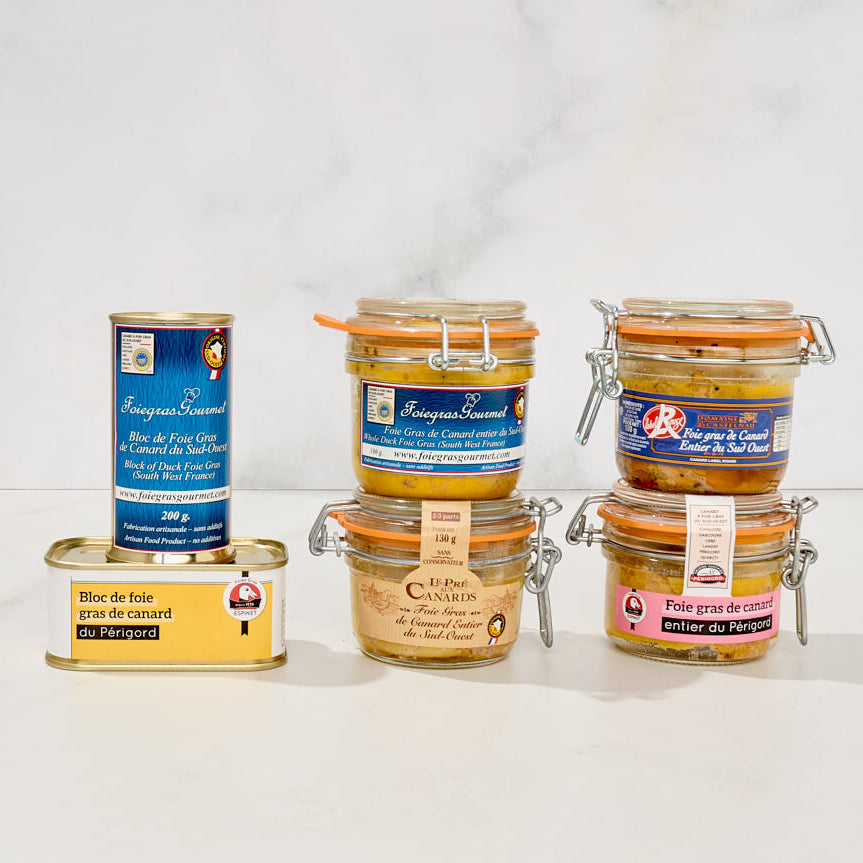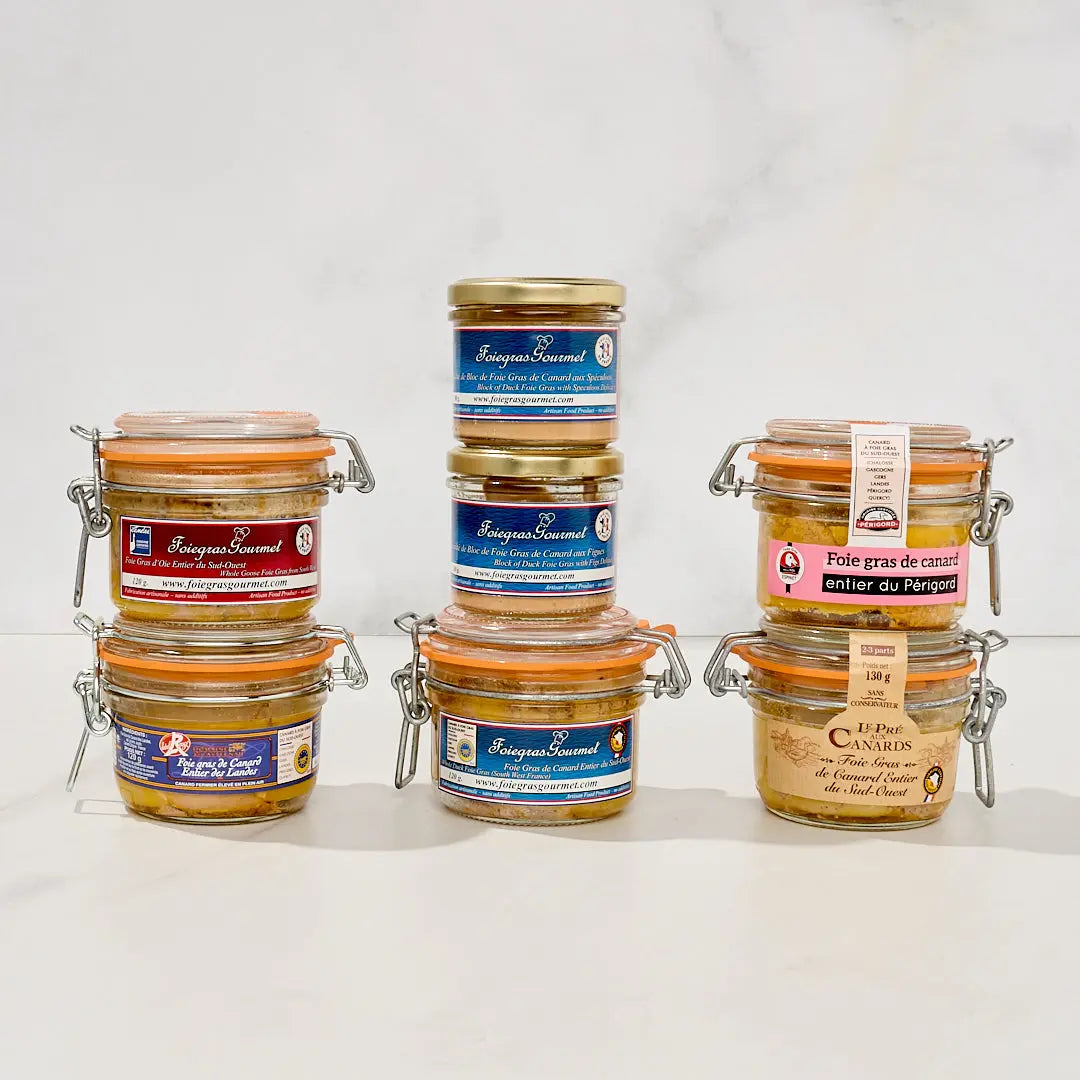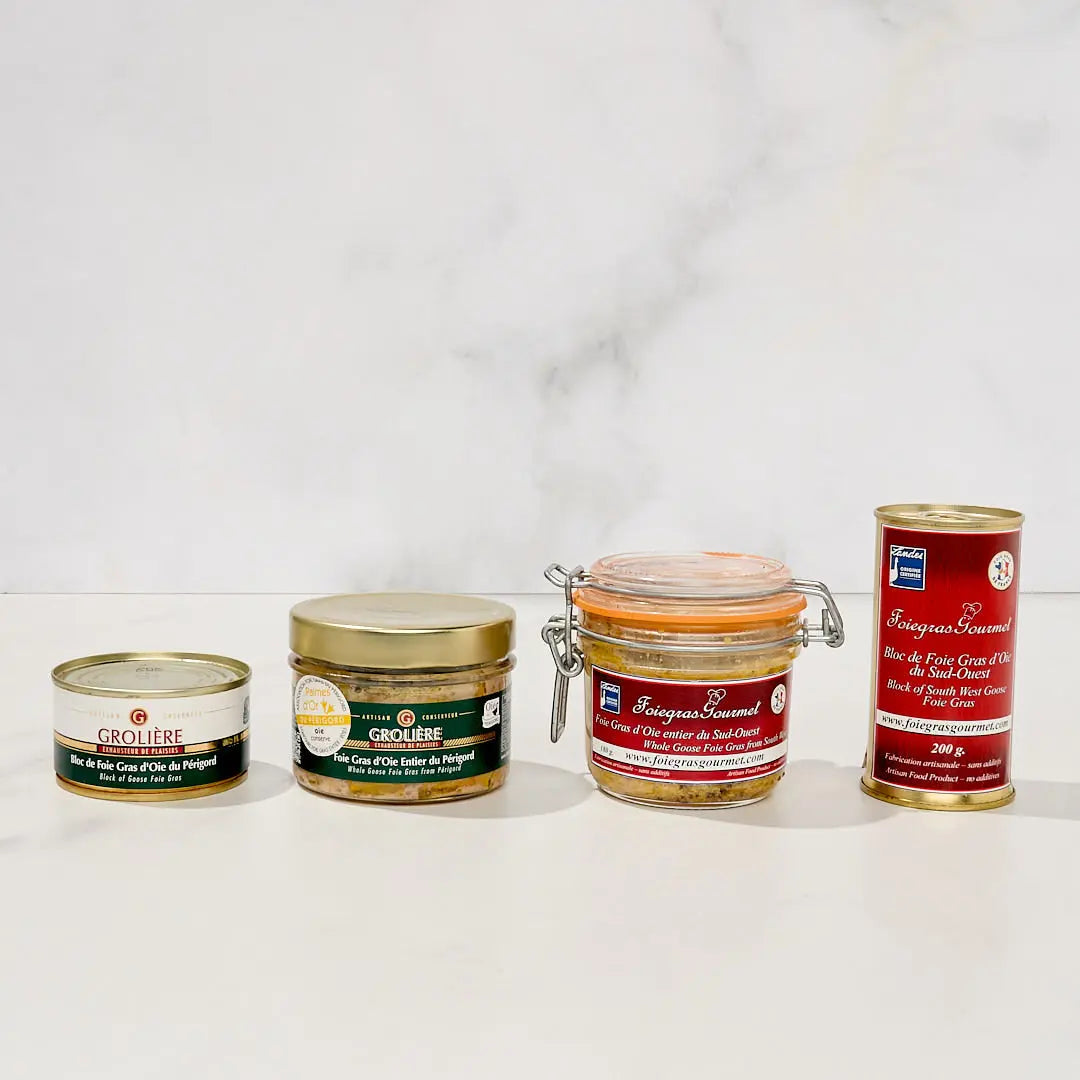What does foie gras taste like?
Foie gras is the liver of a goose or duck that has been specially fattened. Its unique and delicious flavor has been revered since ancient times (the rich Egyptians and Romans were great fans of foie gras) and makes it a highly sought-after dish with its inimitable taste.
What is the taste of foie gras is an excellent question, but difficult to answer as there are so many different types of foie gras: duck or goose foie gras, high quality (grade A) or standard quality, and products with similar names (mousse of goose liver, duck foie gras mousse, foie gras pâtés, foie gras delicacies..) but which are not truly foie gras.

It is very difficult to explain this flavor in a few words. The block foie gras has a subtle and balanced taste, unlike whole foie gras which have a rather authentic and aromatic taste.
Importantly, goose and duck foie gras each have a distinctly different taste: goose foie gras with its delicate, sweet flavor and its soft, unctuous texture, while duck foie gras seduces the mouth with its more pronounced taste echoing local flavors.
It is the favorite food of the French who are lucky enough to have many gastronomic specialties. In France, 90% of the French love foie gras, but many only eat it during the holidays because it is an expensive product and perceived as a treat.
In gastronomic restaurants throughout France, foie gras is offered with each chef preparing it to their own recipe to ensure their cuisine stands out from their competitors.
Fresh foie gras is highly prized and can be enjoyed:
- Hot from a frying pan: melting, with a very robust flavor, this is the favorite dish of connoisseurs and usually enjoyed in a restaurant because it is difficult to prepare well.
Fresh foie gras, very popular
- Cold in a terrine: prepared in many different, often original ways including the temperature at which the foie gras is cooked and the cooking time. The shorter the cooking time and the lower the temperature, the stronger the flavor. The degree of robustness in the flavor is a matter of personal preference. Many families buy fresh foie gras to make a foie gras terrine for Christmas, each seasoning in their own way (with an alcohol such as white wine, port or Armagnac) according to family tradition or perhaps following the latest recipe trend.
75% of foie gras eaten in France is purchased in glass jars or tin cans purchased directly from a shopkeeper. These are processed only insofar as being sterilized to preserve the product and should contain minimal additional ingredients such as a little salt and pepper in the form of seasoning.

These may take the form of:
- A whole foie gras in a jar whose taste remains robust yet balanced
- A block of foie gras with its less pronounced taste and milder flavor which is ideal for those discovering foie gras for the first time.
Articles on dishes to taste at least once in your lifetime abound and foie gras features prominently on many of them. If you have never before sampled foie gras, the first taste will be a pleasant surprise and the second mouthful will delight! As with all fine foods, it is a matter of personal taste – some will enjoy the flavor while others will be immediately planning a vacation in the southwest of France!
Every year, the roads of the Southwest France (where there are many Foie Gras routes, Foie Gras museums and farms to visit) are filled with French and foreign tourists attracted by the beauty of the landscape, free range animals (birds, game..) not accustomed to confined spaces. and the quality of the gastronomy.













Bonjour,
Le foie gras doit-il avoir un goût un peu salé nous avons prit pour ces fêtes L’ARNAUDIE très bon mais un peu fade vous conseillez meilleur ?!
Dans l’attente de votre retour
Merci pour vos conseils
Leave a comment